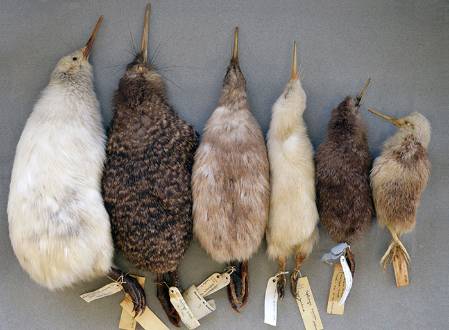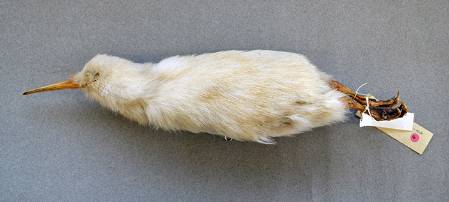I thought I would dedicate my blog today, ANZAC day (in honour of my antipodean countrymen) to the avian symbol of New Zealand, the kiwi. But not just any kiwi: the collection of curiously coloured kiwi specimens held at the Museum in Tring.
Walter Rothschild, the eccentric founder of our Museum in Hertfordshire, was fascinated by flightless birds, including kiwis, and kept many as part of his live menagerie. In fact, it is said that he took a flock of 30 kiwis with him when he went to study at Cambridge in 1887.
Rothschild was also fascinated by albino animals and had a large number of abnormally coloured specimens in his bird collection. Today, among its 250 kiwi specimens of three different species, Tring holds 11 birds that show aberrations in colour, including two suspected albinos.
Hein van Grouw, a curator in the Museum's bird group, and an expert in avian colour peculiarities, says:
Rothschild was very fond of kiwis and very fond of colour aberrations in birds in general, so a colour aberrated kiwi was a highlight.
There are two terms for an all-white bird: albinism, caused by an absence of the enzyme necessary to activate colour pigment cells in feathers, skin and eyes; and leucism, a lack of colour pigment cells altogether. The main difference between the two is that albinos have red eyes, and as a result, very poor eyesight.
Colour aberrations in little spotted kiwi, Apteryx owenii, L-R: leucistic adult, normal adult, diluted semi-adult, albino semi-adult, normal chick, brown chick.
Hein says 'normal' albino birds don't usually survive past fledgling, not because they're eaten by predators, but simply because they can hardly see.
But kiwis aren't normal birds. A kiwi doesn't rely on their eyes as much as a normal bird. They are more like a mammal, and does things by feeling.
While it is difficult to put an accurate figure on the incidence of albinism in birds, Hein suggests a ratio of something like 'one in a million'; of course:
If you looked in a Museum collection you'd think it was pretty common, but that's just because there was a time when every funny coloured bird seen by a collector was shot and put in a collection. It's not representative of what's in the wild.
But that's not to say that every Museum in the world has a collection of aberrantly coloured birds, or indeed kiwis, as impressive as our own at Tring.
Rothschild was very interested in colour aberrations in general and therefore collected an impressive number of examples. Although most of his bird skin collection was sold to the American Museum of Natural History in New York in the early 1930s, he kept about 3,000 skins himself, including the kiwi skins.
I’m not sure whether there are any aberrant kiwi skins from his collection in New York, but I’m pretty sure that the Tring collection holds the most extensive kiwi aberration collection outside New Zealand.
Little spotted kiwi, Apteryx owenii. It's presumed to be albino but, because its red eyes have not been preserved, curators can not say for sure.




